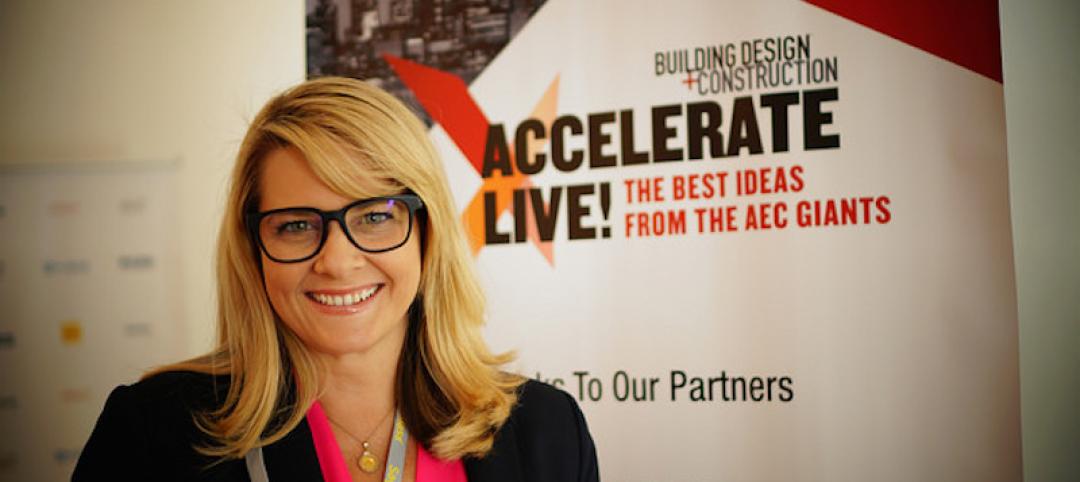Over the past four years, I’ve traveled between the US, and the UK to learn how BIM is impacting projects of all sizes and scale. Along the way I asked myself, were there lessons to be learned in one market that the other hadn’t yet uncovered? Were there pitfalls experienced in one country that could translate into meaningful insights for the other? Would they even be willing to learn from each other’s experiences? And what I’ve noticed is that beyond the obvious differences we all are aware of, like the UK’s government mandate requiring BIM Level 2 for all public sector projects and the lack of top-down pressure in the US, we’re not that much different. Sure, our approaches may be nuanced based on our laws, project hierarchy and contracts but fundamentally we’re all focused on solving the same equation…how can we collaborate more effectively on projects, leveraging digital information between as many project stages as possible.
Or so I thought until I stumbled across this lively twitter exchange sparked by the well-respected, Casey Rutland, on the topic of BIM vs VDC vs digital engineering. Seeing the passionate and multi-perspective responses in the thread, I knew it was time to dig beneath the surface and see what we agree and disagree on when it comes to BIM, not only for design but also for construction and beyond.
To have this discussion, I assembled a panel of BIM experts from the US and the UK to talk through the finer points of BIM, VDC, and data-enabled project delivery. The panelists were Nigel Davies – Director of Evolve Consultancy, Brok Howard – Technical Account Manager with dRofus and Josh Bone – President of J. Bone Technology. We met up at the Bluebeam eXtreme Conference, where I invited them to participate in a panel entitled, “BIM in Practice: Maximizing Data through Digital Workflows”. After presenting to the audience I pulled them off stage to sit down and talk at a deeper level about a few key points.
BIM vs VDC…is there a difference?
To kick things off, I picked up the conversation sparked on Twitter and asked our experts to weigh in. How do our two countries differ on the means and methods for delivering digital information?
BIM: Data you need when you need it
If BIM is considered the mechanism for how we work together then data is the what that’s delivered throughout the BIM process. But how do we differ in what information we specify as valuable, and to whom and when?
Can BIM Improve Project Collaboration?
Much of what hinders accountability and trust within traditional project delivery methods is a lack of transparency. If BIM is how we work together and data is what we share, then who we share information with and when is the key to improving collaboration. Are we truly collaborating better with BIM?
BIM vs PDF: Why argue file types?
Some BIM experts narrow the scope of what can be defined as BIM and end up arguing about file types. The trouble is, many General Contractors who work with downstream project partners that struggle to evolve beyond paper-based workflows, having 2D and 3D information that’s easily accessible, is key to being able to participate on BIM projects.
In a recent McGraw Hill Smart Market Report on “The Business Value of BIM for Construction in Major Global Markets” the top benefits General Contractors cited as the benefits of BIM were; reduced errors and omissions, collaboration with owners/design firms, and reduced error and rework. If BIM is how we work together and data is what we share, and who we share information with and when is the key to improving collaboration, then PDF absolutely has a role to play. But will our experts agree?
In the end, it was clear that the experts agreed more than they disagreed. Each looked at the implementation of BIM on a project from a different vantage point but one thing was clear. The benchmark was the same – “how effectively are they able to communicate?” Without improving baseline outcomes like that, we must step back and ask ourselves, “What real problem are we trying to solve?
More from Author
Sasha Reed | Dec 15, 2017
Future vs. current state of construction innovation: How will we make the leap?
Looking beyond today’s constraints to the possibility of what “could be” is a key characteristic of those defining and delivering innovation to design and building firms across the globe.
Sasha Reed | Jul 19, 2017
Introducing StrXur by Bluebeam
Our goal is to present unique perspectives you may not be able to find anywhere else.
Sasha Reed | Jul 13, 2017
Defining the future by mastering the art of change
From my perspective, what separates organizations thriving in the digital revolution from those who are not boils down to one thing: leadership.
Sasha Reed | Mar 15, 2017
Incentivizing change: Show me the money
Who is succeeding, and on what terms? And what will it take for everyone to experience the benefits of that success?
Sasha Reed | Oct 4, 2016
The talent shortage: Will the training the AEC industry desperately needs arrive in time?
As the construction industry bounces back from the Great Recession, an entirely new class of tech-savvy construction professionals has been created, and the supply of these highly skilled, tech-proficient pros has been quickly exhausted.
Sasha Reed | Jul 11, 2016
Construction Disruption at AECX: Technology, hackathons and the promise of change in LA
The lead up to AECX featured a discussion providing insight into the current state of the AEC technological revolution by exploring opportunities, challenges and choices AEC pros face.
Sasha Reed | Jun 23, 2016
Implementing Change: The Five Biggest Mistakes to Avoid
Two truths from the jobsite: 1) The best part about uncovering a problem is discovering its solution, and 2) The worst part about discovering the solution is implementing it.
Sasha Reed | Jun 9, 2016
With all these sharks in the water… (No Predictions Here...Part 2)
Rather than fighting to control the proliferation of apps, perhaps we should be training our eyes to look for signs of long-term viability among all the fins in the water
Sasha Reed | Dec 17, 2015
How is the Value of VDC for Design Management Translating Outside the US?
Sascha Vesterlund, a VDC Specialist, Design Processer with MT Højgaard, and Nathan Wood, Innovation at DPR Construction, shared their perspectives on VDC















